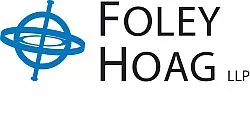- within International Law topic(s)
- within Media, Telecoms, IT, Entertainment and Tax topic(s)
In this article, the third in our blog series on U.S.
tariffs (check out the other two pieces on origination and classification), we continue to spotlight
high-risk tariff practices and potential enforcement
consequences.
Recent increases to U.S. tariffs have caused supply chain
disruptions and other uncertainties in international trade. As most
customs duties are "ad valorem" and therefore determined
as a percentage of the value of imported goods, the declared
customs value is the base for calculating duty liability for most
imports. Thus, understanding the rules and best practices for
customs valuation is essential for businesses engaged in
international trade.
Determining Dutiable Value
Since the late 1970s when the current international rules on
customs valuation were first adopted, the primary method for
determining customs value under U.S. customs law is the
"transaction value." The transaction value is the price
actually paid or payable for the goods when sold for export to the
United States, plus certain statutory additions. If this price
cannot be used – such as when the importer has not purchased
the imported goods, or the buyer and seller are related and the
relationship influences the price – the U.S. Customs and
Border Protection (CBP) applies sequentially a series of
alternative methods.
Just as income taxpayers may reduce their taxable income through
legitimate deductions, the customs value of goods might not include
every element of the cost that an importer incurs. It is legitimate
for importers and exporters to examine their transactions to ensure
they are not unnecessarily paying tariffs on elements of the price
that are not dutiable.1
At the same time, customs law requires certain costs to be added to
invoiced prices, if such costs are deemed to be part of the customs
value. Examples include (1) packing costs, (2) selling commissions,
(3) assists (such as materials, components, or tools provided by
the buyer at no or reduced cost), (4) royalties and license fees
that the buyer must pay as a condition of sale, and (5) proceeds of
any subsequent resale that accrue to the seller.
Determining whether a particular charge or cost is part of the
proper customs value can be complex and often requires careful
analysis. It is usually done with the help of expert advice.
Undervaluation Schemes
Given the complexity of customs valuation and the commercial
context of higher tariffs, importers and their suppliers may be
tempted to engage in illicit undervaluation schemes to reduce
exposure to tariffs. Schemes that involve misrepresenting the value
of imported goods on customs documents are illegal. There are
several common methods by which undervaluation is carried out. One
prevalent form of undervaluation involves the falsification of
invoices. In this scheme, the importer and the foreign supplier
collude to produce a commercial invoice that lists a value
significantly lower than the actual transaction price. Customs
officials rely heavily on these invoices to assess duties, so a
lower declared value directly translates to lower tariffs. Another
common scheme is the use of multiple invoices (known as
"double invoicing"). In this scenario, the exporter
issues two sets of invoices: one with the true value of the goods
for the importer's internal records and another with a reduced
value for customs declaration. The lower-valued invoice is
presented to customs authorities, while the higher-valued invoice
is used for payment and accounting purposes. Other undervaluation
schemes include understating the weights or quantities of imported
goods, and omitting required statutory additions.
Legal and Financial Risks
Undervaluation poses significant risks to importers and other
parties involved in the process. Beyond the obligation to repay
back duties, improper valuation can result in the loss of trusted
trader status and the imposition of substantial civil and
administrative penalties. In more serious cases involving
negligence or fraud, CBP frequently refers matters to the
Department of Justice (DOJ) for civil and criminal enforcement,
which can lead to large fines and, in some instances, imprisonment
for individuals involved. For example, on April 18, the DOJ
intervened in a customs fraud case, U.S. ex rel. Lee v. Barco
Uniforms Inc., where the defendants were accused of violating the
False Claims Act by defrauding the government through
undervaluation, misdeclaration, and underpayment of customs duties
on commercial apparel imported from China. The government's
complaint alleges that the defendants employed a double-invoicing
scheme, submitting false entry summaries to CBP that undervalued
imported goods, and continued to underpay customs duties even after
being warned by a third-party auditor. In a recent memorandum, the
DOJ has identified customs fraud and tariff evasion as top
enforcement priorities, signaling increased enforcement activities
in this area.
Importantly, a party is not shielded from liability even if it is
not listed as the official importer of record, or if the
transactions are Delivered Duty Paid (DDP). U.S. law is clear that
customs fraud can expose anyone involved in the scheme –
whether they are buyers or sellers, corporations or individuals
– to liability.
In sum, undervaluation schemes are illegal and can result in severe
consequences for those involved. Accurate valuation of imported
merchandise is not only required by law, but may also help
importers reduce tariffs by excluding non-dutiable charges. U.S.
businesses should ensure that their valuation practices are
transparent and comply with U.S. customs law. When necessary, they
should seek expert guidance to navigate these complex
requirements.
Footnote
1 Multinational organizations where the buyer and seller of the goods are related will strive to record arms-length commercial terms so that the relationship does not influence the price of imported goods and the transaction value method of valuation will be used. This is often an element in wider planning around transfer pricing and taxation issues. Such matters are beyond the scope of this short analysis.
The content of this article is intended to provide a general guide to the subject matter. Specialist advice should be sought about your specific circumstances.




